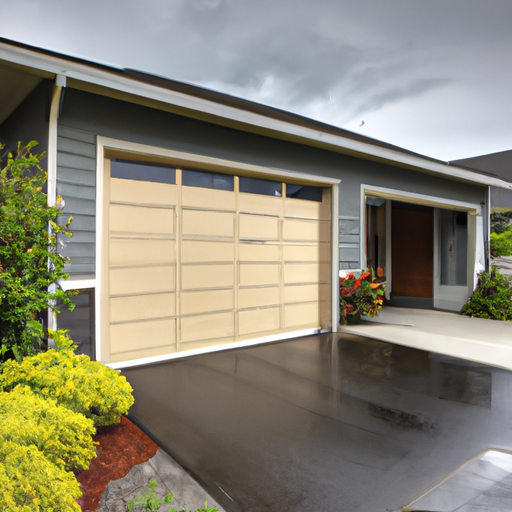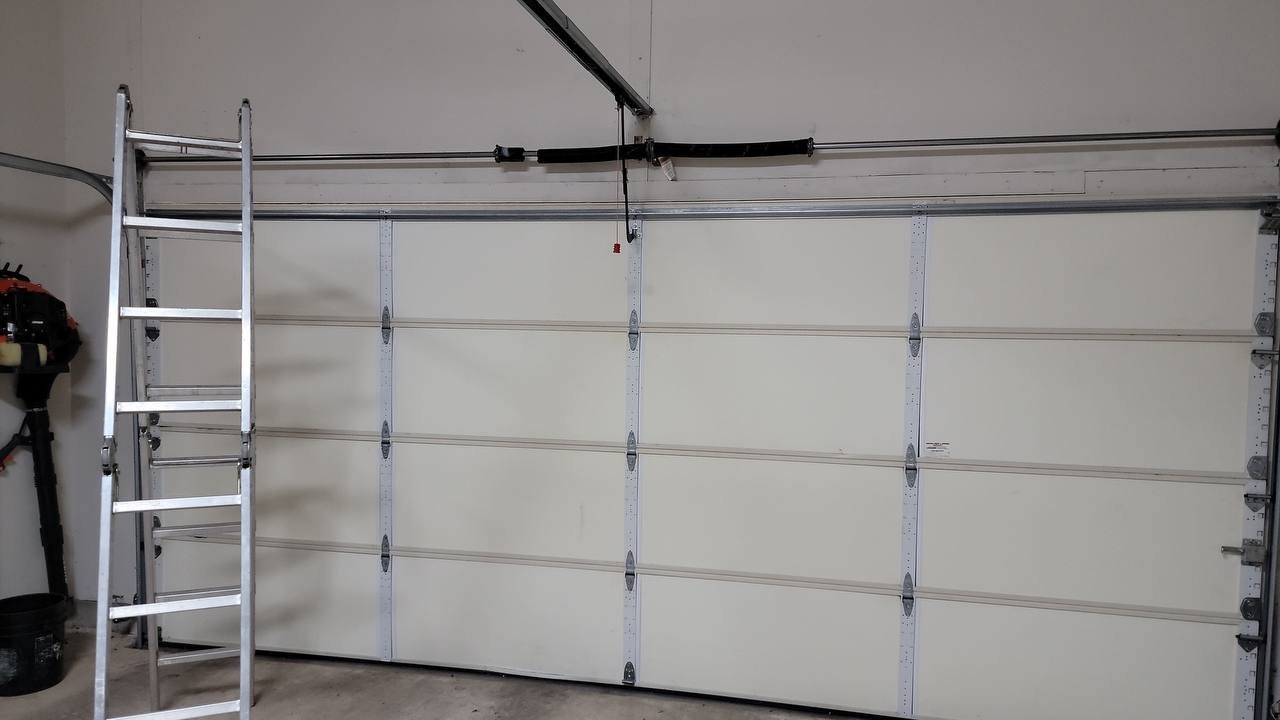In Edmonds, WA, regular maintenance and timely fixes keep homes safe and curb appeal intact. Knowing when to replace parts for garage door repair matters for safety, convenience, and long-term cost. This guide helps Edmonds homeowners spot worn components, estimate repair timelines, and decide when a replacement is the smarter choice.
Why part replacement matters for garage door repair
Garage door repair is more than fixing a squeak or realigning a sensor. Worn parts can cause sudden failures — broken springs can snap, rollers can seize, and tracks can warp. Replacing components early reduces the chance of a full system breakdown and avoids higher costs later.
Common parts that need replacing and when
Edmonds’ coastal weather can accelerate wear on metal and rubber parts. Below are the most common components that fail and practical signs to watch for.
1. Springs
Torsion and extension springs counterbalance the door weight. Springs often show rust, gaps, or creaking before failure. If you hear a loud bang or the door won’t stay open, replace springs immediately. For most residential service calls, springs are replaced rather than repaired.
2. Cables and drums
Lift cables fray under stress. Look for frayed strands, uneven winding on drums, or a door that tilts to one side. Replace cables at the first sign of damage; a snapped cable can cause the door to drop suddenly.
3. Rollers and hinges
Rollers and hinges wear from daily cycles. Nylon rollers often last longer than steel, but cracked or noisy rollers mean it’s time for replacement. Replacing rollers and hinges together keeps motion smooth and extends the life of tracks and openers.
4. Weather seals and bottom rubber
Edmonds homeowners should check bottom seals annually. Cracked or compressed rubber lets in moisture, pests, and drafts. Replacing seals is inexpensive and improves energy efficiency and comfort.
5. Opener components and remotes
Openers have belts, chains, gears, and circuit boards that wear out. If the opener struggles to lift the door, reverses unexpectedly, or the remote is unreliable, inspect the opener. Sometimes replacing a worn gear or the remote fixes the issue; other times a full opener replacement is safer and more cost-effective.
How to prioritize repairs vs full replacement
Deciding between replacing a single part and replacing the entire door depends on age, cost, and safety. Use these guidelines to prioritize smart choices.
- Age of system: If the door or opener is older than 15–20 years, consider full replacement. Many modern doors and openers offer better safety and efficiency.
- Cost comparison: If part replacement exceeds 40% of a new door/opener cost and the system is aging, replacement makes sense.
- Frequency of failures: Repeated repairs on different parts signal that other components are near end-of-life.
- Safety concerns: Any structural damage, severely corroded springs, or compromised cables call for immediate professional attention.
Weather and local considerations
Salt air and damp winters in Edmonds accelerate corrosion on springs, cables, and hardware. Regular inspections and preventative replacement schedules can prevent failure during wet months when corrosion accelerates.
How professionals assess and time replacements
When you schedule garage door repair, a technician inspects balance, hardware, electronics, and safety devices. Expect a step-by-step assessment:
- Visual inspection for rust, fraying, and wear.
- Operational test of open/close cycles and balance.
- Safety sensor alignment and force testing.
- Estimate for parts, labor, and recommended timeline.
Many parts can be replaced same-day in Edmonds with stocked parts. For uncommon parts or full door orders, expect a lead time based on manufacturer availability.
For ongoing tips and seasonal advice specific to our area, check our blog for short how-tos and maintenance checklists.
DIY vs. professional replacement: what Edmonds homeowners should know
Small items like weather seals can be a DIY weekend job. But high-tension components — springs, cables, and opener internals — are dangerous. A proper residential service technician has tools, training, and insurance to replace springs safely and test door balance.
Choose professional garage door repair when:
- Springs or cables are involved.
- The door is off-track or sagging.
- There are electrical or safety sensor issues.
To request an on-site estimate or emergency service in Edmonds, contact us and we’ll schedule a trained technician.
Maintenance schedule to extend part life
- Annually: full safety inspection, lubricate rollers and hinges, check balance.
- Every 3–5 years: inspect springs and cables closely; plan replacements based on wear.
- Seasonal: replace weather seals and test opener sensors before rainy months.
Regular maintenance from an experienced team reduces emergency repairs and extends component life.
Costs, warranties, and timing in WA
Local pricing in WA for common replacements varies:
- Springs replacement (pair, residential): commonly ranges by door weight and spring type; technicians will provide a firm quote after inspection.
- Cables, rollers, and hinges: generally lower-cost parts with modest labor; replacing rollers and hinges together is cost-effective.
- Openers: repairs for gears or circuit boards are sometimes cheaper than full replacement, but new openers include modern safety features and warranties.
Ask about parts warranty and labor guarantee. Many residential service providers offer limited warranties on parts and a workmanship guarantee. If you’re comparing options, ask for an itemized estimate and warranty terms before work begins.
For a list of available services and common pricing practices, view our services page.
Replacing worn parts at the right time keeps your door reliable, protects vehicles and possessions, and reduces safety risks. Regular inspections and prompt garage door repair will keep Edmonds homes secure through rainy winters and salt air seasons.
Frequently Asked Questions — Edmonds, WA
Q: How does Edmonds’ coastal weather affect garage door parts?
A: Salt air and higher humidity accelerate corrosion on springs, cables, and track hardware. Inspect these yearly and replace corroded parts promptly to prevent sudden failures during wet months.
Q: When should I expect to replace garage door springs in Edmonds?
A: Springs are rated by cycles (often 10,000–20,000). In coastal WA, expect earlier replacement if you see rust, gaps, or decreased balance. Have a pro inspect springs every 3–5 years.
Q: What is a typical timeline for parts replacement?
A: Simple parts like seals and rollers can be replaced the same day. Springs or opener replacements are often same-day if parts are in stock; specialty doors may need a few days for parts delivery.
Q: What price range should Edmonds homeowners expect for common repairs?
A: Prices vary by door size and part quality. Expect lower-cost items (seals, rollers) to be modest and springs/openers to be higher. Always request an itemized quote and warranty details.
Q: Do I need a permit to replace garage door parts in Edmonds?
A: Most minor part replacements don’t require a permit, but full door replacements that alter structural openings or electrical work might. Check local Edmonds building rules or ask a licensed technician to verify.
Helpful local resources in Edmonds, WA
- Garage Door Repair Seattle
- Garage Door Repair Bellevue
- Garage Door Repair Redmond
- Garage Door Repair Kirkland
- Garage Door Repair Mercer Island
- Garage Door Repair Edmonds
- Garage Door Repair Issaquah
- Garage Door Repair Tacoma
- Garage Door Repair Everett
- Garage Door Repair Bothell
- Garage Door Repair Sammamish
- Garage Door Repair Renton
- Garage Door Repair Lynnwood
- Garage Door Repair Woodinville
- Garage Door Repair University Place
- Garage Door Repair Gig Harbor
- Garage Door Repair Lakewood
- Garage Door Repair Puyallup
- Garage Door Repair Mukilteo
- Garage Door Repair Vancouver
- Garage Door Repair Kenmore
- Garage Door Repair Burien
- Garage Door Repair Auburn
- Garage Door Repair South Hill
- Garage Door Repair Yarrow Point
- Garage Door Repair Clyde Hill
- Garage Door Repair Port Townsend
- Garage Door Repair Duvall
- Garage Door Repair Snoqualmie



